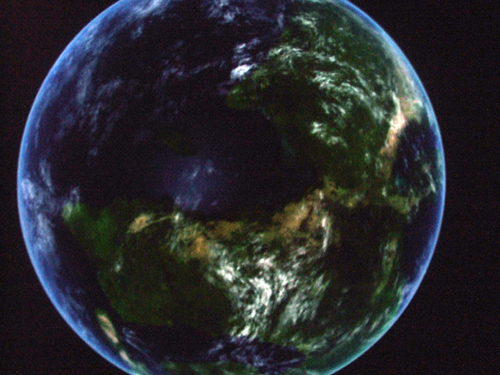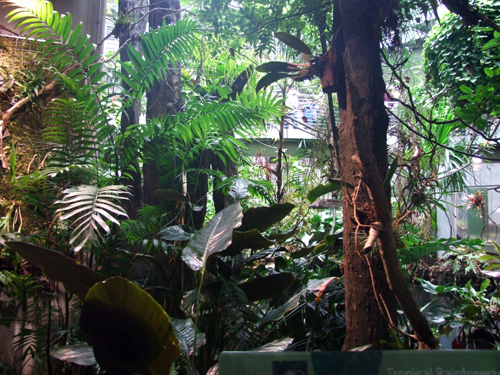
By Donald H. Harrison
SAN FRANCISCO – Anyone who flatters himself into believing that he has “been there and done that” will be quickly disabused of that conceit during a visit to the California Academy of Sciences in Golden Gate Park. The sprawling complex houses a planetarium, tropical rain forest and aquarium as well as a host of other exhibits exploring various aspects of the natural world.
Currently the planetarium features a 25-minute digital presentation in an Omnimax-style theatre envisioning the universe as it was developing the molecular building blocks of life. Narrated by actress Jodie Foster, the movie Life: A Cosmic Story also ventures into interior space, burrowing into a leaf of a redwood tree all the way to its sub-cellular level. With their heads comfortably tilted way back into headrests to view the planetarium’s 90-foot diameter dome, audiences learn that the molecular structures of organic matter are all pretty similar.
“The show’s core concept is that all life on Earth is related, having evolved from a common ancestor,” according to a statement by Ryan Wyatt, director of Morrison Planetarium and Science Visualization. “Taking an even longer view, we see that life’s origins begin with dark matter and the first stars—our pedigree is actually 13.7 billion years in the making.” In tandem with the development of scientific theories describing phenomena too big, too small, too distant, or too long ago to be seen by the human eye, computer technicians have been developing imaginative, illustrative, digital story boards .
“Today’s technology allows us to convey scientific concepts with unprecedented fidelity, using actual research data as the foundation of our storytelling,” Wyatt also stated.

From the planetarium visitors easily can make their way across a central lobby to another 90-foot diameter dome, this one housing a simulated rain forest. The temperature in the dome is kept above 80 degrees, and there is a misting system fooling various species of plants and trees into growing as if they were within indigenous ecosystems. Direct sunlight filters in through the top of the dome.
Visitors proceed up a three-story ramp to view both plant and animal specimens, in turn, from Borneo, Madagascar, and Costa Rica. Once they arrive at the top of the spiral ramp, they may take an elevator down to an underwater section of a simulated Amazon rain forest. There they have an opportunity to view numerous species of fish in addition to other fauna and flora.

From the rain forest, self-guided exploration leads seamlessly to the Steinhardt Aquarium, which boasts a collection of approximately 38,000 animals representing some 900 species. Many of these can be found along the 25-foot deep coral reef of the Philippines. This exhibit is presented .in a 12,000-square foot tank containing 212,000 gallons of water. High-tech filtering and lighting systems, along with a jet system to simulate currents and water movement around the reef, provide the various species with an environment duplicating what they’d have in the Philippines. Steinhardt Aquarium also has exhibits showcasing the species to be found along the California coast, in a Florida swamp, as well as in coastal South Africa and Namibia, the dwelling places of an endangered species of penguins.
* Harrison is the editor of San Diego Jewish World. He may be contacted at donald.harrison@sdjewishworld.com File: US Canada West 08